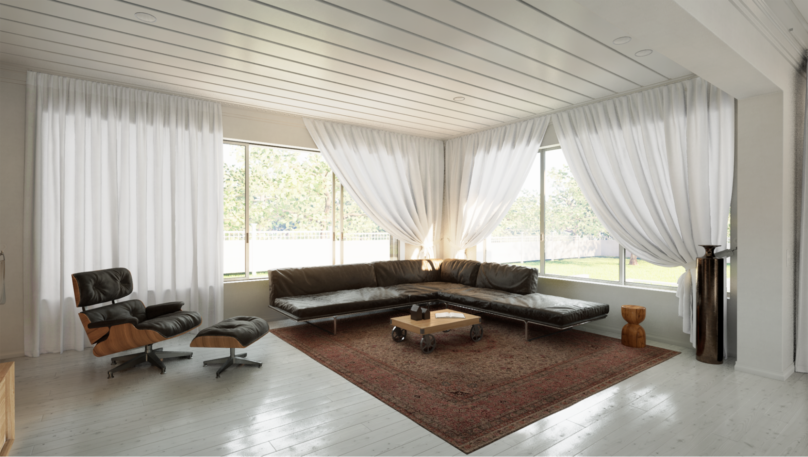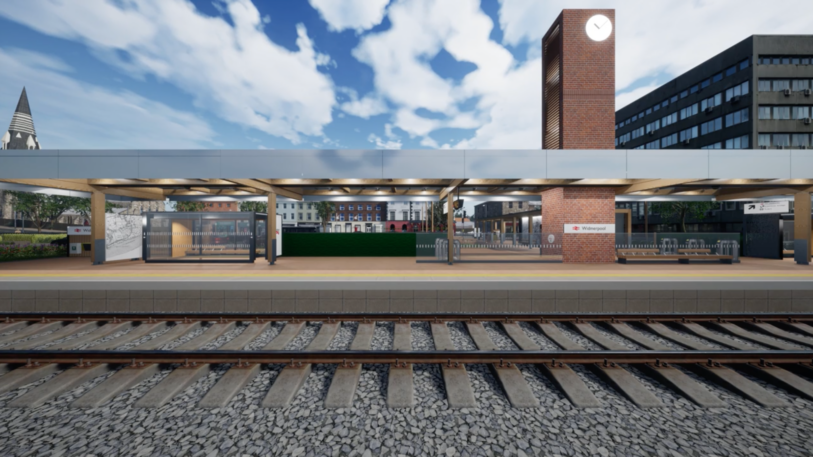The video game Fortnite has gathered a global audience of millions with a simple proposition: One of the game’s modes enables players to build virtual spaces and easily experience them with others. It’s the digital, multiplayer version of a sandbox, or the equivalent of a pile of Lego bricks that anyone around the world can come stack.
It’s all fun and games. But it’s also the kind of accessible building and design tool that has relevance beyond playtime. Increasingly, the technology behind Fortnite and other video games is being adapted for use in the very real world of architecture, urban planning, and development.

Like the video games they’re typically used to power, Twinmotion and Unreal Engine can make an architectural model into an easily navigable 3D environment that people can access, often with little more than a web browser. Adding elements of video game play to architectural design means people can even adjust designs and see what those changes look like in real time.
For designers, the tools make it possible to create highly visual representations of projects very quickly. The technology greatly increases what Pimentel calls a design team’s “what-ifs per hour.”
“The more what-ifs you can explore in the same amount of time is going to make you more creative and more efficient,” says Pimentel, who previously worked for the architecture software company Autodesk. “You can make real-time decisions, and you need the visual detail to support that decision-making.”

In contrast to more traditional public participation processes that involve gathering feedback and ideas and then waiting for the designers to try them out, this method lets members of the public configure designs and see how they change to accommodate different conditions immediately. The process is being used to guide final designs.
Another project using technology from Epic Games is the renovation of the Canadian Parliament complex in Ottawa. Led by the architecture firm HOK, the decade-long rehabilitation project is using the real-time visualization tools in Unreal Engine to create a kind of video game version of the project showing exactly what’s being done at any moment.
Intended more for internal use by the design and contractor teams, the digital version uses 3D models to create a detailed digital twin of the project, with high-resolution graphics showing structural details and interior finishes. Integrating scans of the construction site and internet-of-things sensors within the building, the digital model made in Unreal Engine offers a nearly live view of the project.
“It shows a realistic representation of what’s actually happening in some of these rooms,” says David Weir McCall, architecture marketing manager at Epic Games. “It allows for an honest conversation around the space and how it’s being developed.”

Pimentel says Epic Games recently worked with the American Institute of Architects to introduce the technology to about 60 different architecture firms, showing the real-time design and feedback these game-centric tools make possible. He expected maybe 10 of the firms to express interest in integrating the tools into their practice. About 40 did.
The fact that so many more people are familiar with these kinds of visualizations in the context of video games could be changing expectations when it comes to presenting architectural designs. Pimentel says applying the immersive nature of video games to architectural projects is a natural pivot. “We deliver experience,” he says. “That’s something uniquely possible with real-time tools.”
Recognize your company's culture of innovation by applying to this year's Best Workplaces for Innovators Awards before the extended deadline, April 12.